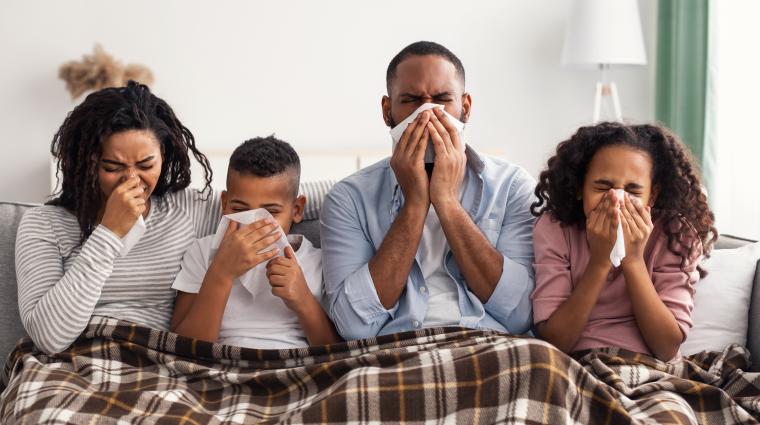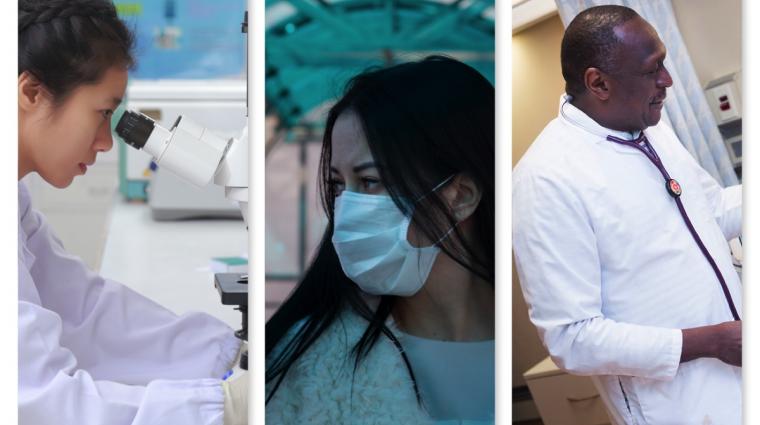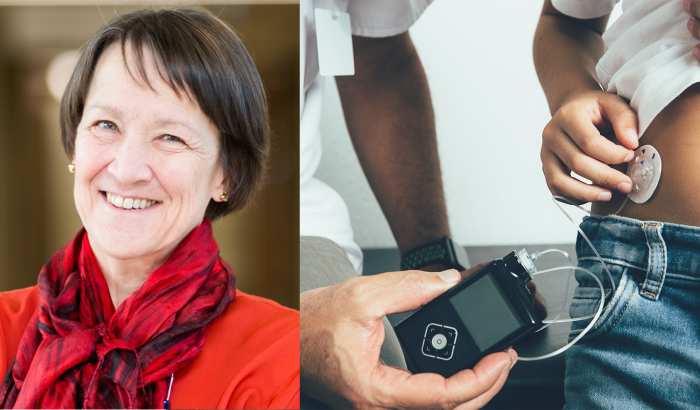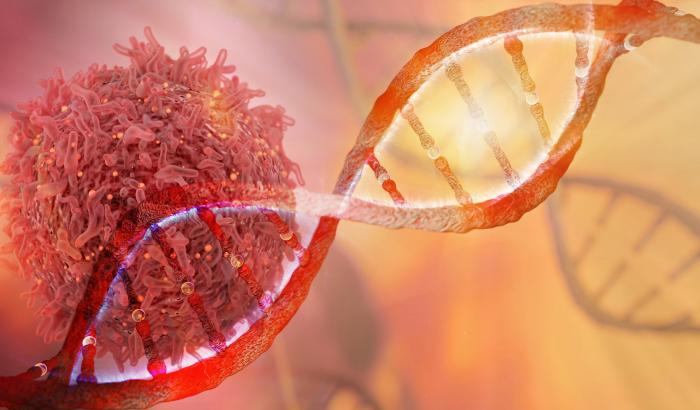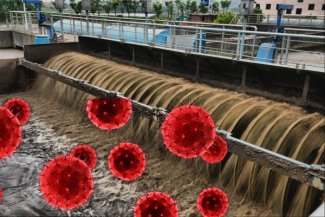
shotshop.com (edited)
In order to get answers to the most important questions about the Coronastep+ project from the Luxembourg Institute of Science and Technology (LIST), we have spoken with project manager Dr. Leslie Ogorzaly. Leslie Ogorzaly is a virologist and her research focuses primarily on methods for the detection of virus particles in water, with a particular interest in characterizing the infectious state of viruses.
For those in a hurry, here is a brief overview of the most important facts about the CORONASTEP + project:
In the LIST's Coronastep+ project, the presence of Sars-CoV-2 within the Luxembourg population is demonstrated using samples of the wastewater at the inlet of 13 sewage treatment plants from all over Luxembourg (which covers around 75-80% of the Luxembourg population). If you compare the results of Coronastep+ with those of the large-scale tests (large scale testing and clinical tests), you can see the same trend over the last few weeks and months. Both test procedures therefore complement each other well.
However, the Coronastep+ measurements usually detect a trend towards the development of the pandemic in Luxembourg earlier than the large-scale PCR tests. An increase in the number of people infected with SARS-CoV-2 manifests itself in wastewater data a day or two earlier than in medical diagnoses of diseases. The Coronastep+ measurements therefore allow an overview of the situation to be obtained more quickly and also more cost-effectively, since only one sample per sewage treatment plant is required to obtain an overview of the frequency of infection in a large number of people. Regional trends can also be recorded with the project. In contrast to PCR tests on humans, however, the project does not allow potentially contagious persons to be identified and thus to break possible chains of infection through subsequent isolation and quarantine measures. The project also does not allow predicting the exact number of infected people - although research is being carried out to make this possible in the future.
It seems that viruses in wastewater are no longer contagious. However, this is currently still being scientifically tested in the Coronastep+ project and can only be clarified with certainty after these analyzes. It also appears that sewage treatment plants can destroy the virus. This is also explored by the project.
For more details on the project, here is the full interview with Leslie Ogorzaly:
Dr. Leslie Ogorzaly, you are the project manager for the Coronastep+ project. An important question right at the beginning:
How is it possible that the virus can be detected in wastewater?
SARS-CoV-2 is a fairly new form of coronavirus. The abbreviation "SARS" stands for "Severe Acute Respiratory Syndrome". The viruses mainly enter the human body via cells of the respiratory tract, where they spread and multiply. Some of the viruses or components of the viruses are excreted through the intestines. Their traces can then be found in the excrements of infected people - with which they finally end up in the sewage system. Researchers can detect them, or at least fragments of the viral genome, using suitable analytical techniques. To do this, they take samples of the wastewater at the inlet of sewage treatment plants - as in the CORONASTEP+ project of the Luxembourg Institute of Technology (LIST).
How do the researchers proceed to detect the viruses?
The detection of coronaviruses essentially takes place in three steps. First, the wastewater is collected over the course of a day. Secondly, the wastewater sample is concentrated - with the aim of increasing the density of the virus RNA fragments in the sample. To do this, the researchers reduce the volume of the wastewater sample using an ultrafiltration procedure. This significantly reduces the water volume of the sample, while the number of viruses remains the same. The result: the concentration of viruses increases, making them easier to detect. Finally, a widely used molecular biological method that has long been tried and tested in microbe’s analysis is then used for detection: the so-called Polymerase Chain Reaction, or PCR for short. This is exactly the same method that is used to test oral-pharyngeal swabs samples for SARS-CoV-2 in diagnostic tests.
Infobox
From a more scientific point of view, the “PCR” approach actually consists of two separate steps. This is why the experts also refer to the Reverse Transcriptase-Polymerase Chain Reaction, or RT-PCR for short. After purification, the RNA of the viruses present in the wastewater is first reverse transcribed into DNA (DeoxyriboNucleic Acid). The abbreviation RNA stands for RiboNucleic Acid - a complex biomolecule that carries the genetic material, i.e. the genetic information, in some viruses. The resulting DNA molecule can be then duplicated in the laboratory - known as amplification in the technical jargon. With the help of PCR technology, researchers can then check whether certain genes characteristic of the genetic material of SARS-CoV-2 are present in the wastewater sample - the viruses' calling card, so to speak. Certain small synthetic molecules (primers and probes), which act as tiny biomolecular "sniffer dogs", help in the search for these genes. In their search for SARS-CoV-2, the scientists focus their attention on two different components of the virus genome, known as the E gene and the N gene. Only if both genes can be found in the sample is the virus considered to be clearly detected.
In principle, yes if you know the structure and the genome of the virus you want to detect. This method is the classic tool for detecting viruses, bacteria and other types of microorganisms in environmental and water samples. In Luxembourg it has been used for many years to analyse the presence of microorganisms in wastewater samples. However, these methods (concentration procedure as well as RT-PCR) have to be adapted to be specific of the virus of interest. When it became clear that SARS-CoV-2 was present in wastewater, we adapted the methods to it.
This method allows the concentration of viruses in wastewater to be determined very accurately. However, a minimum concentration is required to exceed the detection limit of the analytical assay in order to detect the viruses at all. The limit for a reliable detection of genetic traces of SARS-CoV-2 is about 1000 viral particles (or RNA molecules) per litre of wastewater.
Can the data also be used to draw conclusions about how many people are currently (actively) infected?
No yet. Unfortunately, this is not possible at the moment. Because up to now we are still missing crucial pieces of information. We don’t know how many viruses an infected person usually excretes in their stool - in other words, the number of viruses per stool gram. Nor do we less know the time between when people spread the virus, its journey into the sewers and the arrival at the sewage treatment plant – and whether there already is a part of this virus that disappears. Once this is better understood, it will be possible to estimate the number of infected people in the area contributing to the wastewater treatment plant, based on the total concentration of viruses detected in the wastewater. Such an estimation is ultimately one of the goals of our project. Therefore, some aspects of CORONASTEP+ is to investigate these research gaps. From an experimental point of view, we currently investigate how many viruses per person enter the wastewater from human excrement.
What does the data already reveal?
The data enables us to identify trends - and to do so very early on. Indeed, the dynamic patterns of virus concentration in wastewater over time clearly reflect changes in the number of infected people. There currently is a very good correlation between these both dynamics. Since around mid-October, for example, there has been a significant and steep increase of the SARS-CoV-2 concentration in wastewater. We also regularly compare the results of our analyses with the latest results of new infections obtained from large-scale testing of the population. We can see quite clearly that both types of testing are very complementary and show the same trends.
Which sewage treatment plants are evaluated?
For our study, which we started in March 2020, we are currently evaluating data from 13 wastewater treatment plants in different parts of Luxembourg. Specifically, these are the wastewater treatment plants in Beggen, Schifflange, Pétange, Bettembourg, Hespérange, Mersch, Boevange.sur-Attert, Uebersyren, Echternach, Grevenmacher, Bleesbruck, Troisvierges and Wiltz. These are by far not all of the country's wastewater treatment plants, but they are the most important and largest. And they are spread over all the regions of Luxembourg, so they give a good picture of the situation and development at the nation scale. In total, these 13 wastewater treatment plants cover about 75 to 80 percent of the population of Luxembourg.
How quickly do you receive your results? Does the data always reflect the current situation or does the evaluation procedure lead to a time delay?
It is necessary to collect wastewater samples from the inlet of the wastewater treatment plants under investigation usually over 24 hours to be representative. As a rule, we collect the 24-hours integrated samples in the morning and bring them to the lab for analysis. The results of the analysis in the laboratory are then available by the evening. It usually takes between six and eight hours between the time the samples are received and the time when the results are known. The analysis procedure therefore generates very little, if any, delay in the assessment of the situation. However, we do not take samples every day at every measuring station. When the project was launched, it was planned to check the virus content of the wastewater from each of the wastewater treatment plants examined once a week. But in the last few, we have increased the frequency of sampling at the request of the government. Now the aim is to carry out a wastewater analysis at each plant at least two to three times a week.
How reliable are the results? How high is the risk of incorrect measurements?
The determination of the virus load in wastewater is not only very sensitive but also very reliable. Even if it is not yet possible to determine the exact number of infected people in the catchment area of a sewage treatment plant, trends in the evolution of the pandemic can be clearly and unambiguously identified. Nevertheless, it is possible that external influences may affect the measurements - for example extreme weather events such as heavy rainfall. These will cause an increase in the volume of wastewater in the sewerage system and at the entrance to treatment plants, which could lead to a dilution of the viral load. These phenomena are taken into account in our data processing method.
How can false results caused by such disturbing factors be avoided?
In order to rule out the possibility of mistake of the data on virus concentration, for example due to a greatly increased influx of rainfall in wastewater, we take into account the wastewater flow rate in our model calculations on the estimated virus load in addition to the measurements.
Would it be possible to set up an automated system for continuous monitoring of waste water?
Automatic collection devices are already being used to take wastewater samples. These devices collect a few millilitres of water every five minutes throughout the day, which is collected in a container. In this way, we finally obtain a 24-hours integrated samples at all measuring points, which reflect the conditions in the supplied wastewater during the last 24 hours. However: In order to concentrate the collected samples and analyse them microbiologically, they have to be taken to the laboratory. So far there is no way around this. This makes it impossible at present to install a fully automatic monitoring system.
Can wastewater analyses such as those carried out within the framework of CORONASTEP+ replace large-scale tests?
Not really. In fact, such studies would be a good alternative to the large-testing of the population - if the aim is to detect nationwide developments of the pandemic as early as possible. We have found that, for example, a swelling in the number of people infected with SARS-CoV 2 manifests itself in sewage data one or two days earlier than in findings of the large-scale tests. It also makes it possible to identify areas at risk, because we know that geographical differences exist. Another advantage of our method is that only one sample per sewage treatment plant is needed to obtain an overview of the infection incidence among a large number of people. All households and persons connected to the sewage treatment plant via the sewerage system are recorded at once. Incidentally, this also means that the costs of wastewater analyses are significantly lower than the costs of broad-based clinical tests. However, sewage analysis cannot completely replace large-scale tests, as these tests do not allow a personal identification of infected persons. And this is important in the pandemic in order to break the chains of infection through subsequent isolation and quarantine measures - and thus to contain the spread of the virus.
What are the results so far? What can be seen from them?
The data show that the concentration of genetic material of SARS-CoV 2 in the wastewater at all the wastewater treatment plants under consideration has been increasing dramatically since about mid-October. This is a clear indication of the trend throughout Luxembourg. In addition, the virus concentrations detected are much higher than we measured in March and April - during the peak of the first wave of the pandemic. These data clearly reflect a correspondingly high spread of the virus in the population. The second wave of the pandemic is rolling in force.
Are there regional differences?
No not at the moment, the overall picture is essentially the same at all measurement points in Luxembourg, even if some wastewater treatment plants present a higher virus concentration than others. But in the past (during the summer, for example), regional differences were clearly identified, with a high prevalence of the virus in the south part of the country.
Do the viruses in wastewater pose a danger to people?
It appears that the viruses in the wastewater are not infectious. This can be attributed to the structure of this type of viruses. Coronaviruses are enveloped viruses, known to be very sensitive to environmental influences and, among other things, means that the viruses in water quickly lose their ability to act and ultimately inactivated. After that they are no longer able to infect people who come into contact with water. However, this assumption, which is based on some measurement data and literature references, must still be scientifically verified. This is another objective of the CORONASTEP+ project. For this purpose, we rely on the support of our research colleagues from the Luxembourg Institute of Health (LIH), with whom we work closely. Because in order to cultivate infectious viruses for experiments, a biological laboratory with the highest security level 3 is required. Such a laboratory is available at LIH. The experiments on a possible health hazard from viruses in wastewater will soon begin there.
Can the viruses be eliminated in the sewage treatment plant?
Yes, it seems so. Once again, this is mainly due to the structure of the SARS-CoV-2, which ensures that they are inactivated and removed during wastewater treatment. What's more, in the first phase of this project we also investigated the outlet of sewage treatment plants where the treated water is diverted to a river. We have never detected viruses in the treated water.
Infobox
As the coordinator of the CORONASTEP+ project, LIST works in close collaboration with the Luxembourg Institute of Health (LIH), the National Health Laboratory (LNS) as well as the University of Luxembourg (LCSB). The project is also possible thanks to the collaboration with the “Administration de la gestion de l’eau” and the different wastewater syndicates of the country (SIDERO, SIDEST, SIDEN, SIACH, SIVEC, STEP and Ville du Luxembourg).
Dr Leslie Ogorzaly is Principal Investigator (R&T Associate) in the research group "Environmental Microbiology and Biotechnology" at LIST. She is a virologist and holds a doctorate in environment and health from the University of Lorraine (2009). Since then, Dr Leslie Ogorzaly has been initiating and participating in R&D projects in the field of water microbiology at LIST. His research focuses mainly on methods for detecting viral particles in water, with a marked interest in characterising the infectious state of viruses. Dr Leslie Ogorzaly has developed some of the latest technological tools available for monitoring viruses in water, combining new molecular tools (aptamer, real-time detection, next generation sequencing) with conventional culture-based approaches. More recently, emphasis has also been placed on the relationship between viral contamination and the water cycle thanks to close collaboration with LIST hydrologists.
More infos about the project: https://www.list.lu/fr/covid-19/
Author: Ralf Butcher (Science Relations), Jean-Paul Bertemes (FNR)
Editor: Michèle Weber (FNR)

